SUMMARY
This is AI generated summarization, which may have errors. For context, always refer to the full article.
![[OPINION] Stimulus policies leave doubts about Duterte](https://www.rappler.com/tachyon/2020/08/Stimulus-policies-doubt-du30-August-27-2020.jpg)
For Finance Secretary Carlos Dominguez III, the pandemic-induced crisis is not a systemic contraction or cyclical bust but simply a mobility issue. So, regardless of how big the stimulus is, if business and consumers aren’t spending, the economy will shrink anyway.
Dominguez might be mimicking President Donald Trump, who succinctly said of the rising COVID-19 death toll in the US, “It is what it is.”
The gung-ho Dutertenomics policy, ramping up public spending especially on infrastructure, is seen nowhere in the COVID-19 response. Instead, what we are seeing is that Duterte’s economic managers are just waiting out for the virus to eventually go.
While publicly boosting confidence for the markets, Dominguez might be seeing disturbing data. It did not help that having the longest and toughest restrictions have not kept the pandemic at bay as COVID-19 positives have dramatically risen while the economy continues to tank.
Meanwhile, the lack of leadership and governance in battling COVID-19 is highly visible, topped by Duterte’s incoherent and rambling statements that leave more questions than answers, including the state of his health.
Going by numbers
Dominguez is going by his numbers and has stood firm not to spend more, saying that rolling out a larger stimulus package during the pandemic does not “guarantee that a country will undergo a milder recession.”
The Bureau of Treasury has raised P1.2 trillion from bond sales and auctions by end June 2020. In early August, the Premyo retail treasury bonds have fetched P516.3 billion with additional auctions set. In terms of borrowings from banks, official development aid agencies, as well as grants, a total of $8.2 billion was received by end June.
Cumulatively, the total amount generated is around P1.468 trillion, but so far, only P376.6 billion has been spent for COVID-19 response as of August 22, including the Bayanihan 1 package of P275 billion.
Dominguez is not falling into borrowing and spending more, determined just to keep the deficit-to-GDP ratio at 9.6% in 2020, and lower to 8.5% in 2021 and 7.2% in 2022.
The Development Budget Coordination Committee (DBCC) expects the country’s budget deficit to more than double to 9.6% of GDP or P1.815 trillion, from 3.4% of GDP or P660.2 billion in 2019.
Dominguez is highly guarding government’s record of sound macroeconomic management that earned plaudits from lending agencies and good credit ratings.
But being stingy on pandemic-related spending may put the country in dire straits if the economy continues to contract and fails to recover as fast as the authorities expect. Fitch Ratings raised doubts whether Secretary Dominguez can continue to remain stingy on stimulus funds if the economy continues to tank for the rest of 2020.
With the unprecedented 16.5% economic contraction in the 2nd quarter this year, Fitch downgraded its gross domestic forecast for the Philippines to -9.1% in 2020 from its original forecast of -2%.
For the proposed 2021 budget of P4.5 trillion, two-thirds will be financed by borrowings. Of the borrowings, 75% of the P3 trillion debt next year will be sourced from domestic lenders while 25% will come from foreign sources.
Doubting Thomas
What could be the motivation of such stingy stimulus response?
Perhaps Dominguez, deep inside him, is a “doubting Thomas,” as he may be wary of the absorptive capacity of government, given how the pandemic has unraveled Duterte’s governance and might be taking on a longer view to recovery.
Large discrepancies between government allocations and actual spending, and between the revenue it plans to collect and it actually collects, can be unsettling and potentially dangerous – especially during a global crisis.
In a multi-country study titled “Budget Credibility Across Countries: How Deviations are Affecting Spending on Social Priorities” by the International Budget Partnership released September 2019, it found that levels of annual underspending in government budgets averaged nearly 10% across 35 countries.
This budget underspending amounts to more than the health and education budgets in many countries. And in low-income countries, nearly $1 out of every $7 dollars budgeted was left unspent, but could have helped ease the sufferings of their people.
In the Philippines, the government spending less than was budgeted is a historical and recurring problem, especially with infrastructure. The flagship “Build, Build, Build” infrastructure program under Dutertenomics has been marred by chronic underspending, seen in the gap between obligated amounts and actual spending by DPWH and Department of Transportation.
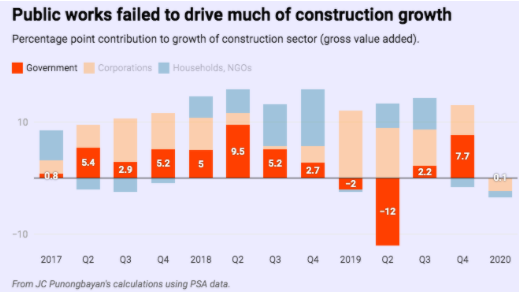
According to PSA data and economist JC Punongbayan, government has failed to considerably jack up public infrastructure spending, contrary to officials’ pronouncements. If government can’t deliver these projects in normal times, what more in a pandemic?
Corruption could also be a major factor why there is hedging on increased government spending. Prior to the pandemic, the Philippines went down to the 113th slot, down 18 notches from 2015, among the least corrupt nations out of 180 countries, according to the 2019 Corruption Perceptions Index reported by Transparency International.
The billion-peso PhilHealth scandal at a time of a public health crisis has further exposed how corruption is becoming a legacy of the Duterte administration.
Likewise in terms of global democracy indices, the Philippines slid down one spot to 54th place in the world on the Economist Intelligence Unit’s (EIU) Democracy Index for 2019. The London-based think tank labeled the Philippine’s regime type as a “flawed democracy” with an overall score of 6.64 points.
The Philippines experienced a two-point decline on Freedom House’s 100-point scale in its 2020 global report, even after holding mid-term elections that solidified legislative majorities for President Duterte.
Now with growing unease over the Anti-Terror Law, the closure of ABS-CBN, media repression, the unlawful detention of Sen. Leila de Lima, and the brutal murders of two activists (72-year old Randall Echanis and 39-yo Zara Alvarez), the Philippines will be pushed several notches down in global indices for democracy and rule of law.
The coming 2022 elections could likewise exert pressure on legislators to favor more government spending. The P1.5 trillion stimulus measure called CURES, a three-year infrastructure rollout immediately passed by the House of Representatives, falls into this category.
CURES would be on top of the regular infrastructure budget under the annual general appropriations act that is P1.12 trillion of the P4.5 trillion 2021 budget. And we all know that local infrastructure projects are a major source of patronage and electoral capture by an incumbent politician.
The pandemic makes it very challenging to accurately forecast economic growth, which hinders governments’ ability to establish reliable revenue targets. Even the IMF, ADB, and other financial institutions are regularly changing their growth projections with depressing new economic data.
Growing corruption and faltering democratic institutions are problems that emerging market economies like the Philippines should be avoiding to achieve sustainable growth and eradicate poverty. Under Duterte, corruption is rising and democracy has significantly been eroding.
Longer view
If Dominguez has no confidence in spending more, given government’s capacity due to weak accountability mechanisms and a protracted pandemic, he may be looking at the longer view. That perhaps, having the 2022 presidential elections just around the corner, it would be wiser to let a new government tackle a post COVID-19 recovery program.
Governments have responded to the COVID-19 pandemic by promising to do whatever it takes to save both people and the economy. Politicians overpromise, the bureaucracy underperforms, and people ultimately suffer.
However, this longer view has to strike a balance between a path towards a humanitarian response and fiscal policy considerations. Tackling inequality in income, health care, and social protection are needed in short-term stimulus measures as well as long-term policy changes.
Importantly, upholding human rights, protecting civic space, and promoting transparency – which are all intrinsic to an effective response – should pave the way to sustainable, rapid, and inclusive recovery for all. – Rappler.com
Tom Villarin is former congressman of Akbayan Party List in the 17th Congress. He authored the law Institutionalizing the 4Ps and the Safe Spaces Act, co-authored the Universal Health Care Law, Expanded Maternity Leave Law, Free Tertiary Education in Public Schools, and the vetoed Anti-Contractualization Law, among others.
Add a comment
How does this make you feel?
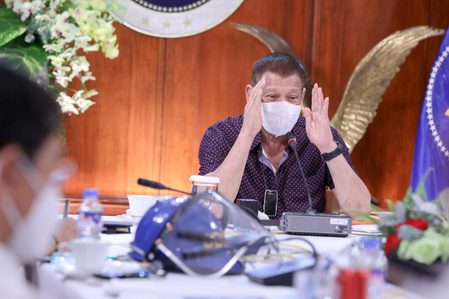
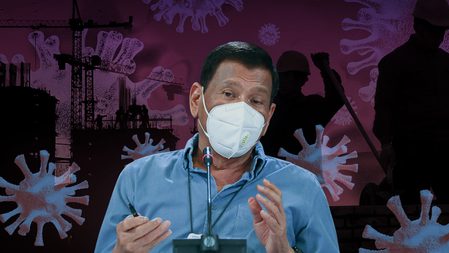


![[Time Trowel] Evolution and the sneakiness of COVID](https://www.rappler.com/tachyon/2024/02/tl-evolution-covid.jpg?resize=257%2C257&crop=455px%2C0px%2C1080px%2C1080px)


![[OPINION] ‘Some people need killing’](https://www.rappler.com/tachyon/2024/04/tl-some-people-need-killing-04172024.jpg?resize=257%2C257&crop_strategy=attention)
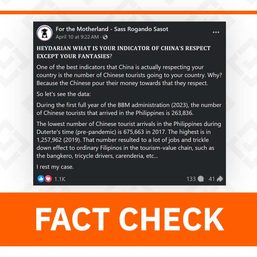
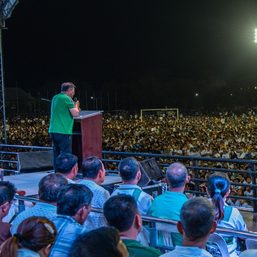


There are no comments yet. Add your comment to start the conversation.